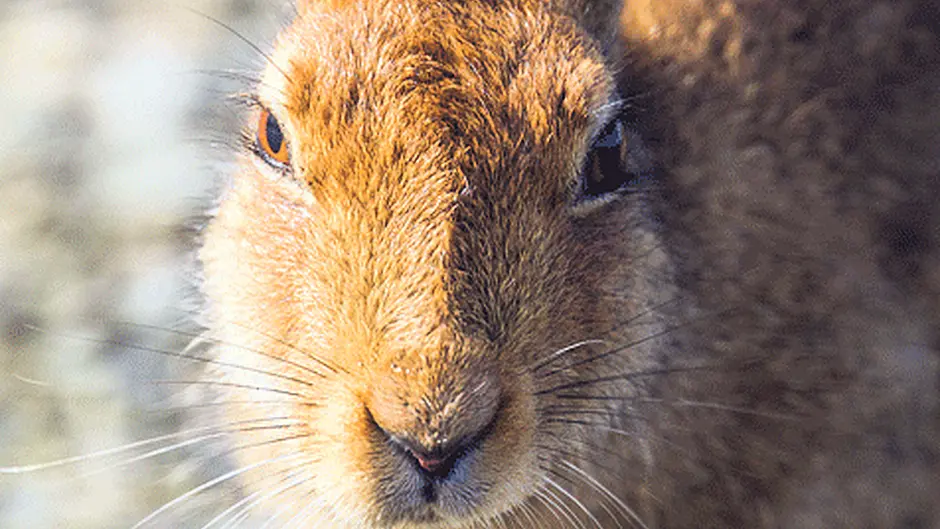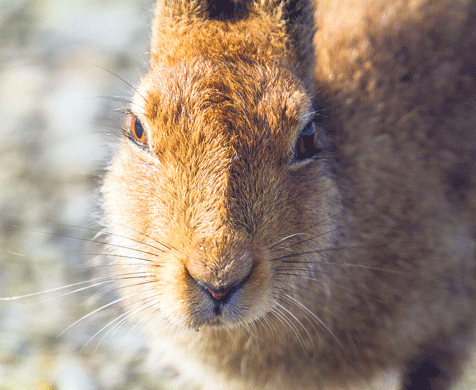An old text offers an insight into how animals were perceived in 17th century Ireland
Wildlife with an amateur observer
THE joy of Christmas lasts well beyond the holiday season itself. One of my favourite gifts this year was a translation of a 17th century text, written by a West Cork man, describing the flora and fauna of Ireland. In it, he offers a completely different perspective of West Cork.
He describes many species that are now either rare or extinct and tells of how the people of 17th century West Cork interacted with the world around them.
The Natural History of Ireland was written by Don Philip O’Sullivan Beare around 1625. Along with many others of the Gaelic nobility, Philip was forced to emigrate to Spain when he was a young boy. He spent the remainder of his life in Spain where he wrote extensively about Ireland and Irish history.
Philip was the first cousin of ‘Donal Cam’, The O’Sullivan Beare, chieftain of that branch of the family. After the defeat of the Irish at the Battle of Kinsale, Philip was sent to Spain in February 1602 with the Beara chieftain’s five-year-old son, Donal. Following the fall of Dunboy Castle, Philip’s father later took part in the epic march of Donal Cam and his followers to his nearest allies in Leitrim. Only 35 out of the 1000 or so who set out on this infamous journey made it to safety, the rest dying along the way. They eventually joined Philip and Donal in exile.
Don Philip was educated in Spain and subsequently joined the Spanish Navy. He wrote The Natural History of Ireland to refute the 12th century text by Giraldus Cambrensis, Topographia Hiberniae. This was written as a form of propaganda to justify the Norman invasion of Ireland and it was full of inaccuracies. The 16th and early 17th century saw the revival of this text as it was used to excuse the brutality of the Elizabethian conquest of Ireland. Other contemporary English writers wrote about Ireland in a similar vein. Don Philip’s manuscript was a form of ‘reverse propaganda’ in a sense as he was trying to paint a better picture of Ireland for its Spanish allies.
Don Philip starts his description of the land animals of Ireland with that of man. ‘This island produces men tall in stature and elegant with well-formed countenance, capable of putting up with heat, cold, thirst and hunger ... high-minded and fit for war’.
Dogs, in Don Philip’s opinion, are the most important of the four-legged animals because of their ability to hunt and guard. However, he qualifies this by saying that ‘from the types of dogs which this island produces, those which guard only the house with their barking or go as companions to their masters are said to be the lowest types. In my opinion though, less useful than these dogs are the ones the noble women have as their favourites, because of the smallness of their bodies and their cheerfulness, whether shaggy, or bald ones, recently imported’. It seems that Philip didn’t have much time for lap-dogs.
He greatly admired the ‘hounds’ for their ‘elegance of body, swiftness and courage’ and says that ‘of all the dogs in the world, they are the most outstanding’. He goes on to say that ‘the smallest of these catch hares, foxes and badgers, but the large ones even kill deer, wolves and wild boar’. These are the famous wolf-dogs of Ireland. Many of them were exported out of Ireland by the fleeing Irish nobility after the Battle of Kinsale. So many, in fact, that wolves began to become a problem and a law was passed by the Cromwellian Parliament banning their export.
These wolf-dogs were very faithful to their owners on whose behalf they would ‘nobly fight and when their masters dies sometim es they abstain from food until they die of hunger’. He goes onto the say that the tanned hide of these hounds ‘is prized when made into gloves, for softening and whitening the hands’.
Don Philip describes the different categories of horses: the largest ones were assigned to fighting while the ‘nobles, on a journey, ride the smaller ones’. The ones that ‘lack pace and courage are used for carrying loads’.
The bulls of Ireland ‘display their nobility by their looks, fierce of forehead ... inviting battle with their horns, scattering sand up high with their front legs’. Cows are ‘fruitful in milk and butter’ while bullocks are assigned ‘some to food, some to agricultural work’.
Sheep provide milk and cheese and two fleeces a year for men’s clothes, while goats ‘also produce health-giving milk which is often drunk as a medicine on physicians’ prescription’.
The hides of horses, cows, sheep and goats were made into ‘shoes, some into leggings, others into gloves’.
He describes ‘dense herds of fat deer’ whose flesh is eaten and ‘their skins turned into breastplates and other useful things’.
W ild boars were fierce and ‘to be feared by unarmed men’. The badger, too, was described as ‘pugnacious in nature’ and ‘snaps when overtaken by the chase’. Its flesh was useful ‘against the spell of the evil eye’ and ‘because of this, thongs of hair made from the skin [of badgers] are added to the bridles of baggage animals.’ The blood of a badger ‘dried and rendered into power is useful for those infected with leprosy’.
Irish hares were ‘light on the feet and fast’ but ‘overtaken by the speed of the Irish hounds’ and ‘useful for their meat and skins’. The ‘benign island’ of Ireland produced them in abundance. ‘Those who often eat the flesh of the hare ... become more beautiful’.
Hedgehogs are protected by spines and ‘they roll on fruit, lying on the ground, which become affixed to their spines’ and they carry them off, with one in their mouth, to holes in trees and hedges.
‘Martens are common here’ and ‘their skin is very valuable, but the flesh is of no value’. Squirrels, too, are useful for ‘the skin is warm when added to clothes, and also it makes an unseamed purse which is highly esteemed by noble people, when it is adorned with silk lining inside and gold, silver or silk ribbons, as is the custom in Ireland’.
Otters were common and ‘when a cub is caught and nourished by man, it becomes tame and often brings back home the fish it has caught in the water’.
Wolves were widespread in Ireland at that time and Don Philip described them as ‘voracious, and tear to pieces cattle and sheep’. He said that ‘their pelt is praiseworthy’ while he says of their flesh ‘I have learned that certain people who have eaten it have had their hair fall out’. He believed that God had sent the Irish hound to act against the wolves who often ‘pay the penalty with their lives for the harm they have done’.
Don Philip also went on to describe the ‘flying creatures’ - or birds of West Cork - many of which are now extinct. However, they will have to wait for the next article. And, as his account is almost four hundred years old, I suppose there is no great urgency in telling the remainder of the tale.
Contact: [email protected]








